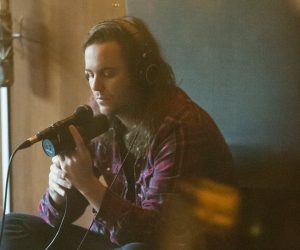
Riffing With Skyhooks
In 1975, Skyhooks had two albums at the top of the charts. Bob ‘Bongo’ Starkie riffs on a time when all you needed was a Vox and a wild imagination.
The Skyhooks owned the Australian album charts in 1975. Up until that point, most Australian albums struggled to make it to No. 1, let alone stay there. Pipped by UK and US acts, musical soundtracks (we loved musicals), and Herb Alpert & The Tijuana Brass Band noodling away on the Spanish Flea. Daddy Cool’s Daddy Who? Daddy Cool spent seven weeks there in 1971, but was a rare bright spot in the Aussie album chart almanac. No. 2 and 3 were as high as Billy Thorpe, Johnny Young and Stevie Wright could get up to that point.
Then along came Skyhooks — a glam band with songs as wide-ranging as their bell bottoms — who dominated the charts. Living in the 70s held down No. 1 spot for 16 weeks, and Ego Is Not a Dirty Word for 11. That’s over half of 1975. That year, Sherbert had a No. 1 hit too… for one week.
Even the censorship board chipped in. Six cuts from Living in the 70s were banned from radio airplay, so when Double J commenced transmission in 1975 by playing You Just Like Me ‘Cos I’m Good in Bed — one of those six banned songs — it only fuelled the fire. In the same year, Countdown also kicked off its first colour broadcast with the Hooks playing Horror Movie; they were already cultural icons.
Guitarist’s Red Symons and Bob Starkie could sift through ska stabs, psychedelic picking, Bossa Nova grooves, the easy-going strumming of a sitcom theme song, and country chunking like a groovy steam train, all in the course of a single pop rock song.
To commemorate the 40th anniversary of that groundbreaking year in Aussie music, Skyhooks have remastered and repackaged Living in the 70’s and Ego is Not a Dirty Word along with a string of live recordings and demos from 1975 as Don’t You Believe What You’ve Seen or You’ve Heard. AudioTechnology will be delving into the technical side of the original recordings and modern mastering next issue. But, being a guitar issue, we couldn’t leave out the most creative guitar duo to top the Australian charts. We chatted to one of the Skyhooks’ axeman, Bob Starkie, about how they came up with those parts.
Bob Starkie: “Red was more mathematical, he would come up with great ways of moving through the song. I was more rhythmically oriented, making sure the whole thing held together.
“For the first album, Vox AC30s were our main choice in the studio. For guitars, Red had a Les Paul, and I had an L Series Strat that I’d cut down; I f**ked with the body, and put the pickups on individual switches so I could have them all on or have any combination of the three.
“I had a Vox Wah Wah pedal, and that was about it. That chopped up tremolo effect on Living in the ’70s was an Eko Multitone. I’ve never seen or found one since. It had this Repeat setting where you could change the velocity. If that pedal’s not working we can’t do that tune, so I’ve kept it going. It’s sitting on a big hunk of junk pedal board that looks like a massive Ferguson tractor. The other pedal I used was an MXR Phase 90. Red and I really got into phasers around Ego.
“We didn’t use any overdrive pedals, straight into an AC30 was pretty good. Those old Voxes were fabulous, right into the Brilliant channel daisy-chained with the Vibrato channel.
“The recording studio was a big room, and we had baffles. Billy Thorpe was in there before us, and he had a wall of amps. I guess he would have close miked them… and then miked off the other wall or something. Our amps were close-miked.
“Living in the 70’s, I was very influenced by Zoot Horn Rollo from Captain Beefheart’s band. The early version of Skyhooks had Steve Hill singing. He sang like Captain Beefheart, his voice was in that deeper range. We were trying to be smart arse songwriters and come up with tricky stuff. Red excelled at that. He was four years older than me, and I always looked up at him; he dragged me up a bit.
“If you listen to Motorcycle Bitch, my solo was just making noise. And that was very Zoot Horn Rollo. I was just struggling to play guitar. It was like I was learning to hold a plectrum.”
Stay tuned for more on these seminal Aussie albums from next issue.
















RESPONSES